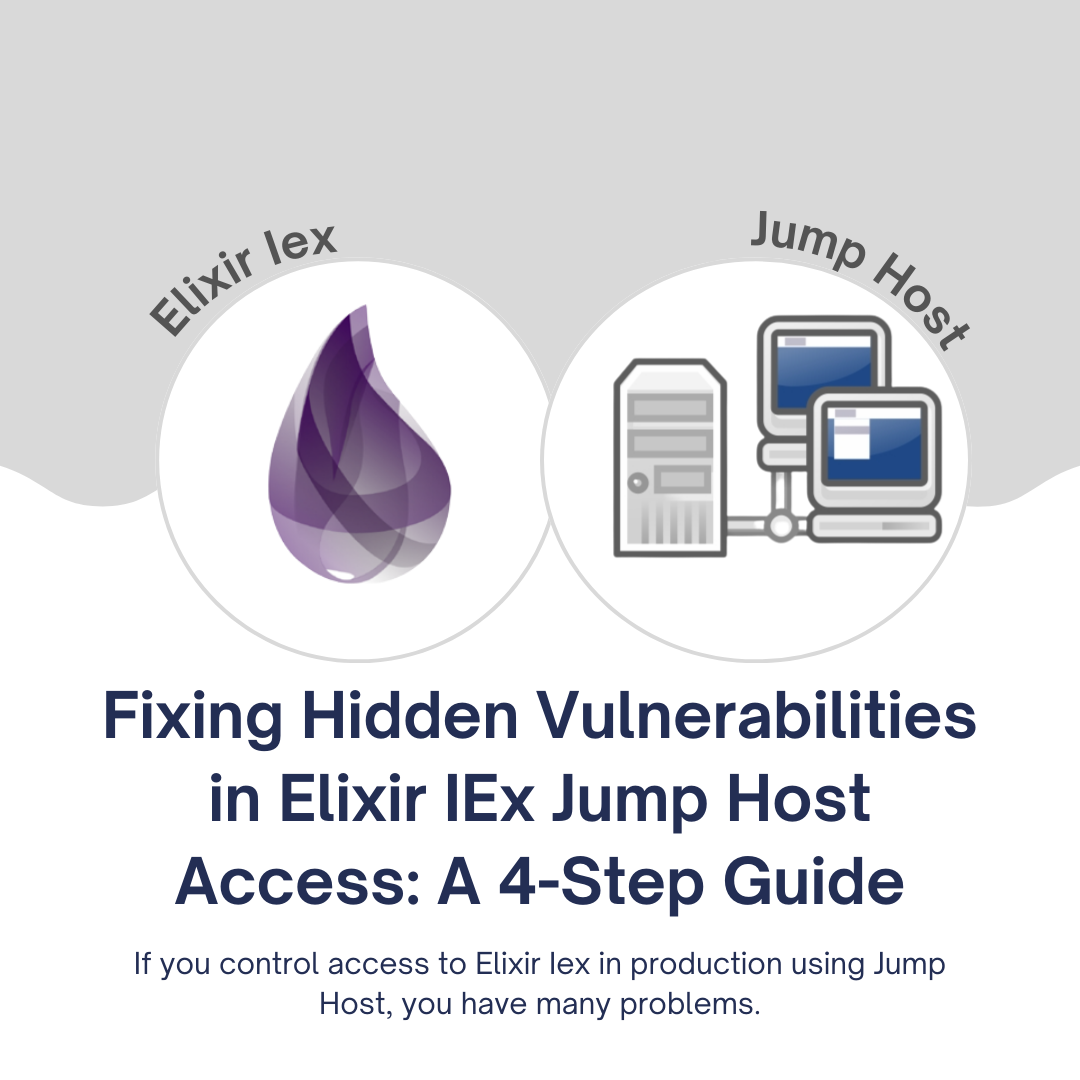Fixing Hidden Vulnerabilities in Elixir IEx Jump Host Access: A 4-Step Guide

If you're responsible for managing access to Elixir IEx in a production environment through a Jump Host, you likely encounter various challenges. In this article, we'll delve into the five most significant problems, their consequences, and provide practical solutions to mitigate their impact.
The Importance of Fast Access to Engineers
Efficient access to the right engineers in a production environment is crucial for maintaining product speed and ensuring rapid troubleshooting, bug fixes, and incident resolutions. However, many teams struggle with inadequate access solutions, leading to security risks or inefficient workflows.
The Five Major Problems
Building Infrastructure for Elixir IEx Access with Jump Host is Painful
The process of setting up and managing infrastructure for Elixir IEx access via Jump Host can be cumbersome and complex. It often involves numerous manual steps and potential pitfalls.
Hidden Vulnerabilities in Access Management
There are four crucial components missing from many Elixir IEx access management setups, which are often overlooked but pose significant security risks:
- Single Sign-on & MFA: Without robust Single Sign-on (SSO) and Multi-Factor Authentication (MFA), your system is vulnerable to unauthorized access.
- Audit Trials and PII Protection: Insufficient audit trails and inadequate protection of Personally Identifiable Information (PII) can lead to compliance issues and data breaches.
- Compliance (GDPR, PCI, SOC2, and HIPAA): Failure to meet regulatory requirements can result in severe legal consequences and damage to your reputation.
- Developer Experience: A poor developer experience can hinder productivity and increase the risk of errors.
Practical Solutions
1. Gradually Incorporate Essential Features
Rather than attempting to address all vulnerabilities at once, follow the 80/20 rule and gradually implement these features:
- Add Elixir IEx to Systems You Already Manage: Utilize existing systems like Google Workspaces to streamline access, avoiding the need for a separate LDAP directory.
- Integrate SSO with SSH: Implementing SSO for SSH access and recording Elixir IEx sessions can be challenging. Consider using Cloud Shell solutions from AWS or Google Cloud or explore tools like Runops. Prioritize integration with Google OAuth for SSO and MFA to simplify access management.
- Prioritize Features Relevant to Your Industry: Focus on the features that matter most for your industry. For instance, prioritize Developer Experience, SSO, and MFA for industries with fewer compliance requirements. Conversely, highly regulated sectors should prioritize compliance features.
2. Leverage Comprehensive Access Management Tools
To reduce complexity and enhance efficiency, consider using tools that cater to various access needs:
- Consolidate Access Management: Instead of relying on multiple tools, consolidate access management for Elixir IEx, AWS/GCP, databases, Kubernetes, servers, and other resources into a single, comprehensive tool. Tools like Runops offer this capability, streamlining access management.
- Prioritize Unified User Experience: Although a single tool may not offer the best user experience for each use case, it's better than managing several disparate tools. Prioritize convenience and efficiency over perfect user experiences for each specific case.
3. Introduce Controlled Friction
While not the ideal solution, adding controlled friction to undesirable access methods can encourage the adoption of more secure practices:
- Introduce Form Submission: If the fastest access method lacks essential security features, introduce a form submission step to the process. This added step may deter users from opting for the less secure approach.
- Gate Access with Requests: For example, if engineers tend to use the AWS web console instead of an automated Infrastructure-as-Code (IaC) pipeline, you can make console access subject to a Jira request. This doesn't immediately revoke access but encourages teams to embrace more secure and automated practices.
Conclusion
Securing Elixir IEx access via Jump Host is a multifaceted challenge, but by systematically addressing the hidden vulnerabilities and adopting practical solutions, you can enhance security, streamline workflows, and ensure compliance with industry standards. Gradual implementation, unified access management tools, and controlled friction can collectively help you fix these hidden vulnerabilities and ensure a safer and more efficient access management system.
